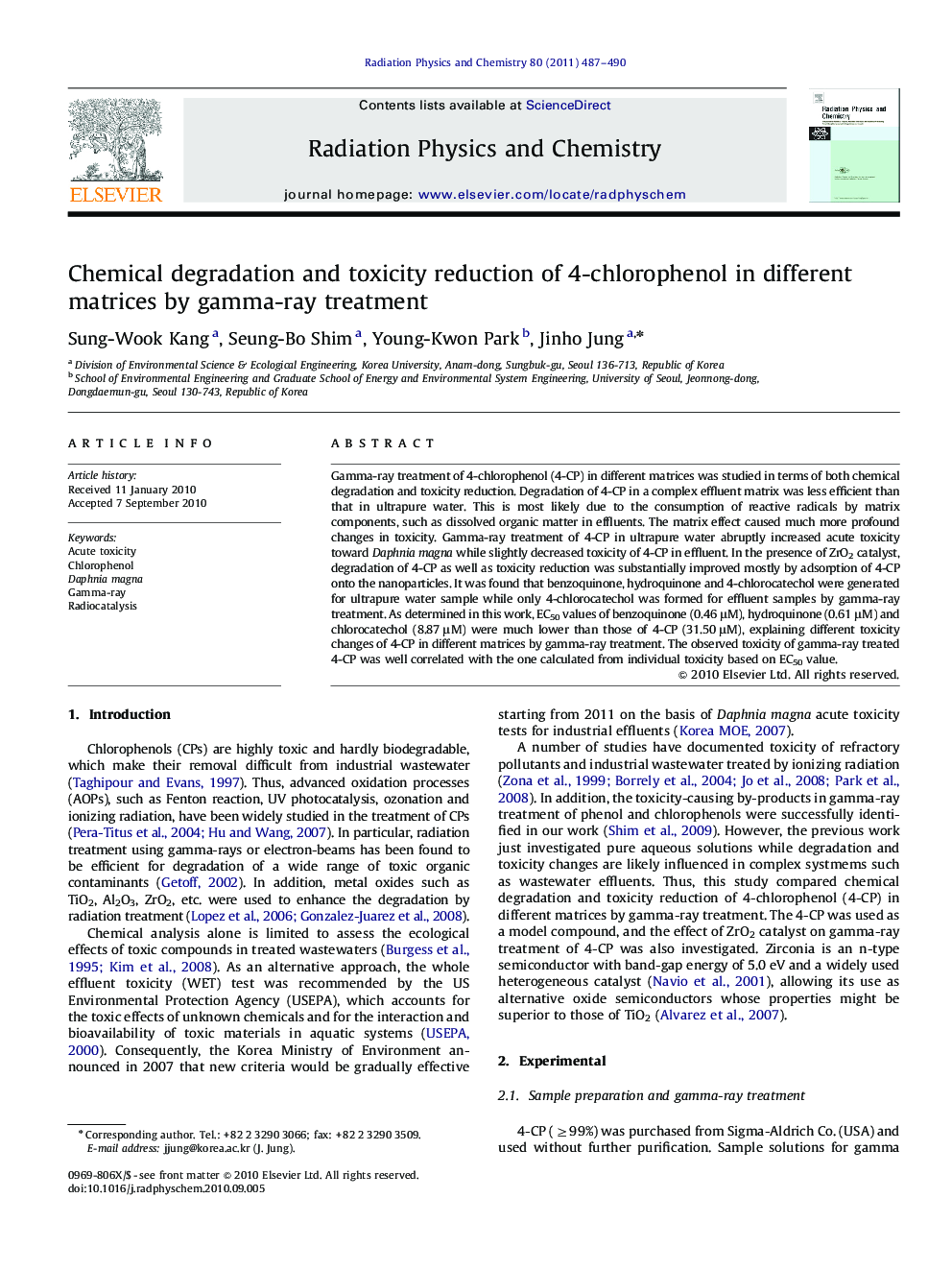| کد مقاله | کد نشریه | سال انتشار | مقاله انگلیسی | نسخه تمام متن |
|---|---|---|---|---|
| 1882800 | 1043261 | 2011 | 4 صفحه PDF | دانلود رایگان |

Gamma-ray treatment of 4-chlorophenol (4-CP) in different matrices was studied in terms of both chemical degradation and toxicity reduction. Degradation of 4-CP in a complex effluent matrix was less efficient than that in ultrapure water. This is most likely due to the consumption of reactive radicals by matrix components, such as dissolved organic matter in effluents. The matrix effect caused much more profound changes in toxicity. Gamma-ray treatment of 4-CP in ultrapure water abruptly increased acute toxicity toward Daphnia magna while slightly decreased toxicity of 4-CP in effluent. In the presence of ZrO2 catalyst, degradation of 4-CP as well as toxicity reduction was substantially improved mostly by adsorption of 4-CP onto the nanoparticles. It was found that benzoquinone, hydroquinone and 4-chlorocatechol were generated for ultrapure water sample while only 4-chlorocatechol was formed for effluent samples by gamma-ray treatment. As determined in this work, EC50 values of benzoquinone (0.46 μM), hydroquinone (0.61 μM) and chlorocatechol (8.87 μM) were much lower than those of 4-CP (31.50 μM), explaining different toxicity changes of 4-CP in different matrices by gamma-ray treatment. The observed toxicity of gamma-ray treated 4-CP was well correlated with the one calculated from individual toxicity based on EC50 value.
Journal: Radiation Physics and Chemistry - Volume 80, Issue 3, March 2011, Pages 487–490